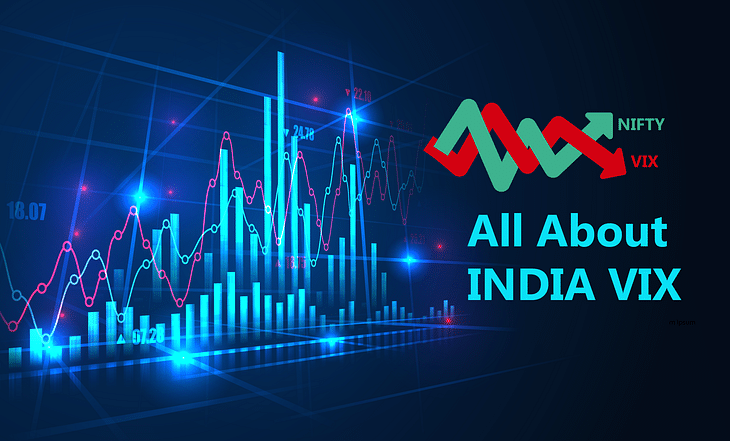The stock market is a dynamic environment where investor sentiment, economic events, and market volatility play a crucial role. One important metric that traders and investors closely monitor is the India VIX. Often referred to as the “fear gauge”, India VIX provides insights into expected market volatility over the next 30 days. Understanding its impact on stocks can help investors make informed decisions before they open demat account and start trading.
What is India VIX?
India VIX (Volatility Index) is a measure of market expectations for volatility, derived from Nifty 50 index option prices. It was introduced by the National Stock Exchange (NSE) in 2008 and is calculated using the Black-Scholes model, which estimates the expected fluctuations in Nifty 50 over the next month.
Key Features of India VIX:
- It is expressed in percentage terms.
- A higher India VIX indicates higher expected volatility, meaning increased uncertainty in the market.
- A lower India VIX suggests lower expected volatility, implying market stability.
- It is negatively correlated with Nifty 50; when India VIX rises, the stock market usually falls, and vice versa.
Relationship Between India VIX and Nifty 50
India VIX (Volatility Index) and Nifty 50 share a strong inverse relationship, making India VIX a crucial indicator for traders and investors in the stocks market. Understanding this relationship helps in assessing market sentiment and making informed investment decisions.
How India VIX Affects Nifty 50?
- Inverse Correlation: When India VIX rises, Nifty 50 usually declines, indicating panic or uncertainty. Conversely, when India VIX falls, Nifty 50 tends to rise, reflecting market confidence.
- Market Sentiment Indicator: A high VIX suggests traders expect larger price swings, leading to cautious behavior in stocks investments.
- Risk Management: Investors use VIX to hedge against market volatility, adjusting portfolios accordingly.
How is India VIX Calculated?
The calculation of India VIX involves:
- Selecting the near-term and next-term Nifty 50 option contracts.
- Using the bid-ask prices of these options to determine implied volatility.
- Applying the Black-Scholes pricing model to estimate market expectations of volatility.
The formula is complex, but in simple terms, the India VIX value represents the percentage movement expected in the Nifty 50 index over the next 30 days.
India VIX and Its Impact on Stock Market Movements
The relationship between India VIX and stock market movements is crucial for traders and investors. Here’s how it impacts various market participants:
1. Impact on Traders
- High India VIX: Indicates increased volatility, leading to larger price swings in stocks. Traders often adjust their strategies, using stop losses and hedging positions to manage risk.
- Low India VIX: Suggests market stability, favoring positional traders who seek gradual gains rather than sharp price movements.
2. Impact on Long-Term Investors
- Volatile Markets (High India VIX): Investors may hesitate to invest in stocks, fearing unpredictable movements.
- Stable Markets (Low India VIX): Long-term investors prefer lower volatility, as it offers steady growth opportunities.
3. Impact on Institutional Investors
Institutional investors use India VIX to gauge market sentiment and decide on portfolio allocations. A sharp rise in VIX can trigger risk-averse behavior, leading to sector rotation or defensive stock selection.
4. Impact on Stock Indices
- A rising India VIX often signals market corrections, bearish trends, or panic selling.
- A falling India VIX indicates confidence and stability, leading to a bullish market trend.
Historical Trends
During market crashes, India VIX spikes, while in bullish phases, it remains low. For example, during the COVID-19 crash in March 2020, India VIX surged above 80, while Nifty 50 saw a steep decline.
Why Traders and Investors Track India VIX
India VIX, often called the “Fear Index,” measures market volatility based on NIFTY 50 options prices. It helps traders and investors assess expected market fluctuations, guiding their strategies.
Key Reasons to Track India VIX
- Market Sentiment Indicator – A high VIX suggests increased market uncertainty, while a low VIX indicates stability.
- Risk Management – Traders use VIX to adjust their positions based on expected volatility.
- Options Pricing – Higher VIX leads to expensive options premiums, impacting options trading strategies.
- Market Timing – Investors track VIX to determine entry and exit points, especially during market corrections.
- Portfolio Hedging – A rising VIX may signal a need for hedging against potential market downturns.
How Traders Use India VIX for Decision-Making
- Options Traders: Use India VIX to price their options contracts effectively. Higher VIX values mean expensive options due to increased uncertainty.
- Swing Traders: Monitor VIX to decide entry and exit points for trades.
- Day Traders: Adjust their strategies based on VIX movements to manage risk and volatility better.
Should You Consider India VIX Before You Open a Demat Account?
If you’re planning to open a Demat account and start investing, understanding India VIX can help you:
- Identify market conditions before making your first trade.
- Adjust your risk management strategies.
- Decide whether to invest in a volatile or stable market.
Conclusion
India VIX is an essential tool for investors and traders who want to navigate market movements effectively. Whether you are a short-term trader looking for volatility or a long-term investor seeking stability, keeping an eye on India VIX can provide valuable insights into market sentiment. Understanding how this index impacts stocks can improve your investment strategies and help you make better decisions when you open a Demat account.
Monitoring India VIX regularly can give you an edge in market timing and risk management. As a rule of thumb, higher VIX levels mean more caution, while lower VIX levels suggest stability and growth opportunities. By integrating this knowledge into your trading and investment strategies, you can stay ahead in the ever-changing world of stock markets.
